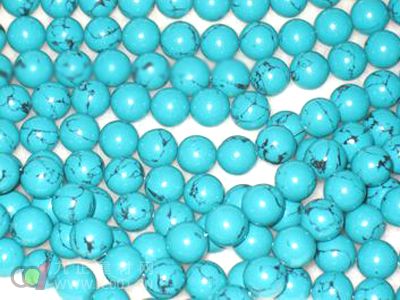Turquoise Maintenance Guide: Turquoise is a delicate gemstone with a relatively low hardness compared to water, making it prone to scratches and wear. It is also chemically unstable and can be easily damaged by acidic substances. Exposure to high temperatures can cause discoloration, and prolonged contact with sweat or oils may lead to staining over time. Proper care is essential when wearing or collecting turquoise to preserve its beauty. Most turquoise contains natural pores that can absorb oils from the skin, such as hand oil, lip balm, and perfume. In traditional Chinese craftsmanship, a thin layer of paraffin is often applied to the surface to enhance its color and provide a protective barrier. However, even with this protection, it's important to minimize contact with cosmetics, lotions, and excessive body oils, as they can damage the stone over time. Due to its porous nature, avoid using heavy liquids like tribromomethane or diiodomethane for density testing, as these can cause discoloration. Turquoise is also sensitive to pollution, so it's best to keep it away from tea, soapy water, oils, rust, and alcohol to prevent contamination through its tiny pores. Turquoise is highly sensitive to heat and should never be exposed to direct flames or intense sunlight, as this can cause fading, cracking, or even complete damage. Prolonged exposure to the sun can lead to dehydration and structural weakening, resulting in cracks or loss of vibrancy. High-temperature baking can make turquoise brittle and prone to breaking. This is especially important in Indian handmade jewelry, where turquoise is often set in silver. Silver conducts heat quickly, and during repairs, the high temperature can accidentally damage the turquoise, which is bonded to the metal. Turquoise has a moderate hardness, so it’s important to avoid knocking it against harder objects or other jewelry. Never place turquoise in an ultrasonic cleaner, as the solution can seep into the pores and cause discoloration. Additionally, the vibration may cause the stone to chip or crack, especially if it comes into contact with other items. Whether the turquoise has visible holes or a dense surface, it remains vulnerable to damage. Some turquoise imitations and cheap Indian fake jewelry are poorly made and difficult to repair, sometimes even impossible to fix once damaged. Always purchase from reputable sources to ensure quality and longevity. By following these care tips, you can enjoy your turquoise jewelry for years to come. Auxiliary Agent For Concrete Retarder Auxiliary Agent For Concrete Retarder,retarding agent,set Retarder Shanghai Hongyun New Construction Materials Co., Ltd , https://www.hongyunpce.com
Turquoise maintenance method
Classification by structure:
(1) Sugar: sugar calcium, gluconate, etc
(2) Citric acid, tartaric acid and their salts
(3) Zinc salt and phosphate
(4) lignosulfonate
Hardening effect
(1) Influence on strength, excessive incorporation will cause the concrete to remain unsolidified for 24 hours or even 72 hours, thus affecting the need for early strength of concrete and delaying the construction progress. No obvious effect was found on the concrete of suitable age.
(2) The effect on contraction, the appropriate use of the contraction has no significant effect. Excessive use will cause the top concrete to dry and shrink due to excessive water evaporation and shrinkage cracks.
(3) The effect on frost resistance durability is similar to that of concrete without adding retarder. [1]
Detection index
Increased turnover: 8
Initial setting time difference: +60~+120
Compressive strength ratio 7 days: 120
Compressive strength ratio 28 days: 120
Softening coefficient: 0.55